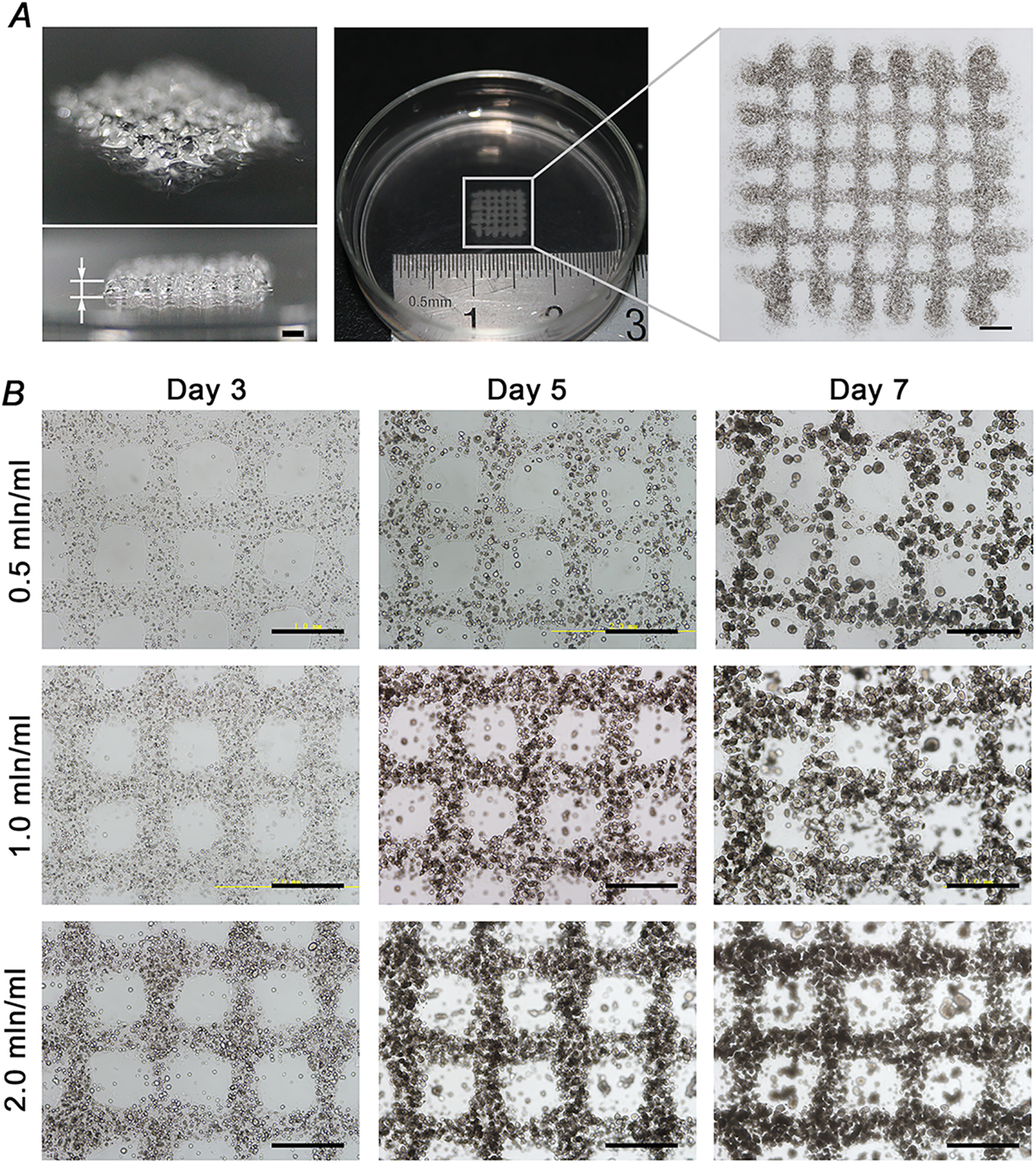3D printing of embryonic stem cells in building blocks

A new 3D printing method allows to obtain regular blocks of embyonic stem cells (ESCs) that could be used to build larger structures like tissues or organs. The researchers from Tsinghua University in Beijing and Drexel University in Philadelphia obtained uniform and homogeneous embryoid body structures that can facilitate further tissue growth. The study was published in the journal Biofabrication.
In vitro 3D culture of ESCs has become a widely used technique in embryonic development studies and in regenerative medicine, for development of organoids for drug screening or potential transplantations. ESCs tend to spontaneously aggregate and form embryoid bodies (EBs), which are good models of the spatio-temporal processes that happen during embryo development. Several techniques have been used to fabricate these cellular spheroids in vitro, like static suspension, hanging drop and multiwell culture. Each method has, however, its disadvantages. In static suspension, cells are inoculated on a non-adhesive plate and left to aggregate, but the EB shape and size are not controllable. In the hanging drop method, small amounts of ESCs are placed on a plate lid, which is then turned around and creates an EB on the plate underneath. This method allows to control the EB shape, but is costly and results vary among operators. Multiwell cultures are a good high-throughput method that obtains uniform EBs arrays, but the plates are expensive and usually non-customizable.
Hydrogel-embedded ESCs in a macro-porous structure
Bioprinting technologies have obtained 2D structures where EBs size and shape are controlled, but these don´t mimick in vivo environments as faithfully as a 3D structure. The authors projected a recapitulation of an in vivo 3D environment will cell-matrix contacts. To that end, they tried their extrusion-based temperature-sensitive 3D printing technique with hydrogel-embedded ESCs in a macro-porous structure.
The authors successfully constructed a grid-like structure where EBs grew with controllable and homogeneous size and shape. Printing parameters were tuned to obtain a 90% cell survival rate after the process. Stem cell pluripotency was also measured and proved to be maintained, and cell proliferation was similar to the one ontained in vivo. The tecnique allows high-throughput production of uniform, custom EBs in building blocks easily configurable for downstream processes.
Source: eurekalert


